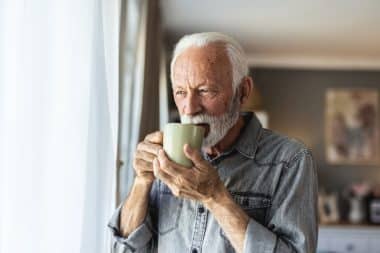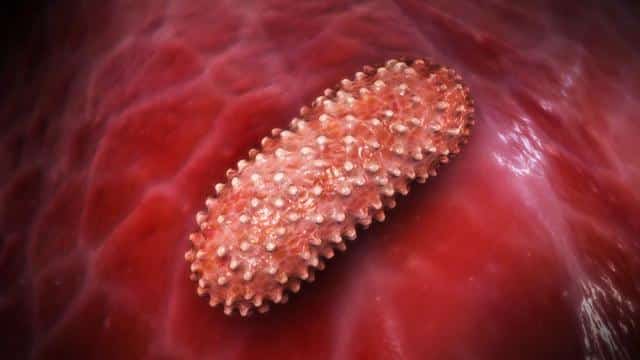How to Rebuild Density Naturally at Any Age
When most people think of bone health, they think of calcium and probably picture a tall glass of milk. But despite decades of public health messaging, mounting research suggests that milk might not be the hero it’s cracked up to be.
In fact, maintaining and rebuilding bone density, especially as we age, is about far more than calcium. It’s a delicate symphony of minerals, hormones, lifestyle choices, and daily habits. At the heart of it all?
A surprising hormonal connection… specifically, the balance between estrogen and progesterone.
Milk: The Calcium Paradox
While milk is often promoted as the go-to source of calcium, its high animal protein content may actually contribute to calcium loss. That’s because animal proteins when digested, produce an acidic residue in the body.
In response, the body draws on its most abundant alkaline resource—calcium stored in bones—to neutralize the acid. This means the very food meant to “build bones” could be triggering their breakdown. One study published in The American Journal of Clinical Nutrition found that countries with the highest milk consumption also had the highest rates of hip fractures among older adults.
Plant-Based Diets and Bone Strength
If you’ve ever been amazed at the strength of elephants or marveled at the athletic agility of apes and orangutans, it’s worth noting that these large mammals thrive on vegetarian diets. Likewise, humans can draw abundant bone-building nutrients from plant sources.
Dark leafy greens like kale and collards and nuts and seeds such as almonds and sesame provide calcium without the acid load. These foods also contain magnesium, boron, and other essential cofactors that support calcium absorption and bone matrix formation.
Bone-Building Hormones: Progesterone vs Estrogen
One of the most overlooked yet critical elements of bone health is hormone balance. Progesterone and estrogen both influence bone remodeling—but in opposite ways. Progesterone stimulates osteoblasts, the cells responsible for building bone.
Estrogen, on the other hand, activates osteoclasts, which break down bone. In a healthy hormonal environment, these two forces work in harmony to renew bone tissue. But when estrogen levels are high, and progesterone is low… a common condition in postmenopausal women and even younger individuals with hormonal imbalance… bone loss accelerates. Understanding and maintaining this balance is a key to preserving bone health.
Studies such as those published in The Journal of Clinical Endocrinology & Metabolism confirm that progesterone plays a key role in increasing bone density. Some women have turned to natural remedies like Anna’s Wild Yam Cream, which is believed to support the body’s own progesterone production.
Anecdotal reports, including older women who have been managing osteoporosis successfully with natural progesterone, highlight the potential for hormone-balancing strategies to restore bone health. This knowledge empowers individuals to take control of their bone health and explore these strategies.
The Calcium Supplement Myth
Calcium alone cannot rebuild bone. Bones are made up of 12 primary minerals… including magnesium, potassium, zinc, and boron… as well as 64 trace minerals. These minerals play a crucial role in bone health. For instance, magnesium is essential for the absorption and metabolism of calcium, while potassium helps maintain the acid-base balance in the body, reducing the risk of calcium loss.
Zinc and boron are involved in the production of collagen, a protein that provides the framework for bone. Focusing exclusively on calcium without providing these additional cofactors can be not only ineffective but potentially harmful. Excess calcium, when not adequately absorbed, can lead to arterial plaque buildup or kidney stones.
That’s why a lot of holistic practitioners recommend unrefined sea salt as a daily mineral source. Unlike table salt, natural sea salt retains a full spectrum of minerals in balanced ratios highly bioavailable to the human body. These minerals play a vital role in everything from fluid balance to electrical signaling to the structural integrity of bones.
Vitamin D and the Sunshine Factor
Calcium absorption is highly dependent on vitamin D, which the body synthesizes through sun exposure. UVB rays trigger the skin to convert cholesterol into vitamin D3, supporting calcium’s journey from the digestive tract to the bone matrix. Without adequate sun exposure, even a mineral-rich diet can fall short.
Older adults are particularly vulnerable to vitamin D deficiency, and sunscreen can further hinder the body’s ability to produce it. Experts recommend 15–30 minutes of sun exposure several times a week, avoiding soap on sun-exposed skin immediately afterward to preserve the vitamin D-producing oils.

What to Avoid: Substances That Leech Minerals
Refined sugar, caffeine, alcohol, and certain pharmaceutical drugs are known to deplete the body of minerals, particularly calcium and magnesium. For instance, too much caffeine can increase calcium excretion in the urine, while excessive alcohol consumption can interfere with the body’s ability to absorb calcium and vitamin D.
When these substances enter the bloodstream, the body uses up mineral reserves to metabolize and detoxify them. Over time, this can weaken bones and disrupt the mineral balance necessary for bone formation.
Reducing intake of these bone-robbing substances, or eliminating them entirely, gives the body a fighting chance to retain and use the nutrients you’re consuming. This understanding can motivate individuals to make healthier choices and protect their bone health.
Rebounding: A NASA-Approved Bone Strengthener
Regarding exercise for bone health, not all workouts are created equal. High-impact exercise can strengthen bones but may also damage joints, especially in older adults. Rebounding… bouncing on a mini-trampoline… provides gentle yet powerful stimulation to every cell in the body.
It uses gravitational force to stimulate osteoblast activity and improve lymphatic circulation. In fact, NASA has endorsed rebounding as an effective way to help astronauts rebuild bone density lost during extended time in zero gravity.
Vibration Therapy Shows Promise
Vibration therapy showed positive outcomes as a treatment modality to improve bone mass density and postural control in general geriatric populations, but especially postmenopausal women.
Vibration therapy also shows promising results in regaining muscle mass and function after degeneration. It reinforces the blood supply to the bones and reduces osteoclast formation. It reactivates the inactive muscle fibers and the neuronal and proprioceptive sensory systems around them.
It’s a safe, non-invasive, easy to use, and an effective treatment option that still requires more research to explore and extend its potential.
Hydration and Mineral Delivery
Water plays a crucial role in bone health by acting as the delivery system for minerals and other nutrients. When the body is dehydrated, mineral transport is impaired.
This can hinder bone repair and remodeling. Drinking pure, mineral-rich water supports both hydration and nutrient distribution… two key components in bone maintenance.
Understanding the Numbers
Consider these sobering statistics: One in two women and one in four men over the age of 50 will suffer a bone fracture due to osteoporosis. This makes bone health not just a women’s issue but a widespread public health concern.
The complexity of bone composition: 12 major minerals and 64 trace elements… makes it clear that oversimplified solutions like calcium pills and milk marketing miss the mark.
Even the protein content of milk reveals a hidden danger. Only 58% of milk protein is usable by the body. The remaining 42% produces an acidic waste product that must be neutralized—often at the expense of bone calcium.
Conclusion: A Holistic Path to Bone Strength
Bone health is not about one nutrient or one product. It’s about synergy… balancing hormones, choosing whole foods, avoiding harmful substances, exercising wisely, and staying hydrated.
For many, the key lies in correcting the hormonal imbalances that silently chip away at bone strength. Supporting progesterone while moderating estrogen may provide the internal environment needed for bones to rebuild and thrive.
So the next time you think about protecting your bones, don’t just reach for a calcium supplement. Think minerals, think sunlight, think hormones… and start bouncing or even vibrating your way to better bones.









